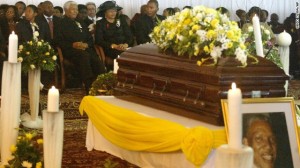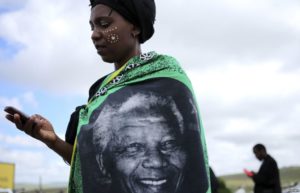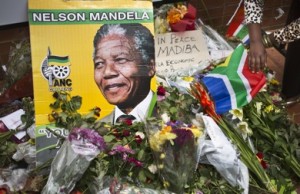Like many people around the world, I watched the bereavement rituals for the beloved Nelson Mandela. In my case, I was looking for clues to answer a question that has been on my mind for years. “Can what is done at the time of a death, and immediately afterwards, help survivors to accept it, and be strengthened by the grief experience?
 Mandela of course, was an international hero, an elder statesman and founder of a new nation. The mourners experiencing this loss included not only immediate and extended family members, but citizens of an entire nation, and of the larger world. In looking at this instance of public bereavement, important elements seem relevant to us all.
Mandela of course, was an international hero, an elder statesman and founder of a new nation. The mourners experiencing this loss included not only immediate and extended family members, but citizens of an entire nation, and of the larger world. In looking at this instance of public bereavement, important elements seem relevant to us all.
Celebrating a life
Following the announcement of Mandela’s passing, spontaneous dancing and singing broke out all over South Africa. In the city streets and village squares, and in the stadium before his state funeral, people whistled, sang, and danced with one another. Having danced at my own son’s funeral I was delighted that people were using song and dance to create a joyful celebration of thanksgiving for Mandela’s life. We know that Mandela would approve since, in a video at age 81, he is seen dancing and he states, “Music and dancing make me at peace with the world…and at peace with myself. (to the audience) But I don’t see much movement happening out there, so let’s join in.”

Expression of Feelings
As the camera panned the crowd it was not hard to spot people crying openly. When a loved one dies, sorrow and tears help us to recognize our loss. I was grateful that people were able to have their sorrow in the setting of a supportive community. Some people decorated their bodies to express their admiration for Mandela, sporting his image on their shirts, headgear, or ink-stamped upon their faces. People attending his funeral stood in the rain for hours, and when asked about their willingness to do this, they said this was a small inconvenience given the difficulties Mandela had confronted on their behalf. They considered this a way to express their gratitude.
Lessons Learned
During Mandela’s eulogy, world leaders and well-known celebrities, through storytelling and personal reflection, spelled out the lessons of his life. They pointed out events, such as the years of his imprisonment; and lauded him for how he handled his challenges; his ability to forgive and make allies of his former enemies. In President Obama’s comments he asked himself, “How well have I applied his lessons in my own life? “ I’ve noticed that, when friends and family are given the opportunity to share stories with one another, formally as part of a eulogy, or informally at a wake or visitation, a fuller picture of the deceased emerges. It’s as though each person’s life were a puzzle, and each story, a piece. When placed along side one another, the picture becomes complete.
Relating to what is unfinished in a life

Mandela lived an unusually long life, yet as his ex-wife Winnie stated it, “Even though he was 95 and had done so much, there was so much that was still undone.” Those of us watching and reading about the rituals of Mandela’s crossing; the full military honors, the 21-gun salute, the 95 candles, one for each year of his life, the slaughter of an ox in his home village, know that the true tribute to his life will consist of what we, the mourners choose to do in the years remaining in our own lives.

